
Ornithology Research
Scope & Guideline
Unveiling the Secrets of Bird Life
Introduction
Aims and Scopes
- Avian Ecology and Behavior:
The journal emphasizes research on the ecological interactions and behaviors of birds, including feeding patterns, nesting habits, and social structures within diverse habitats. - Conservation Biology:
A core area of focus is the conservation of bird species, particularly those that are threatened or endangered, through studies that assess population dynamics, habitat requirements, and the effects of human activities. - Taxonomy and Systematics:
The journal publishes research that contributes to the taxonomy and classification of bird species, helping to clarify relationships among species and improve understanding of biodiversity. - Impact of Environmental Factors:
Research that investigates how environmental changes, such as habitat fragmentation, climate change, and urbanization, affect bird populations and their dynamics is a significant focus area. - Citizen Science Contributions:
There is a notable emphasis on studies that utilize citizen science data, showcasing the role of public participation in avian research and conservation efforts.
Trending and Emerging
- Urban Ornithology:
There is an increasing focus on how birds adapt to urban environments, including studies on species diversity, behavior, and conservation challenges in urban settings. - Climate Change Impacts:
Research addressing the effects of climate change on bird distribution, migration patterns, and habitat suitability is gaining prominence, reflecting the urgency of understanding these impacts for conservation. - Functional Ecology:
Emerging studies are exploring the functional roles of birds within ecosystems, including their contributions to seed dispersal, pest control, and nutrient cycling, highlighting their ecological importance. - Technological Advances in Research:
The use of technology, such as drones and bioacoustic monitoring, is becoming more prevalent in avian research, allowing for innovative approaches to studying bird behavior and ecology. - Citizen Science and Data Utilization:
The integration of citizen science into ornithological studies is on the rise, emphasizing the value of public engagement in collecting and analyzing avian data, which enhances research scope and outreach.
Declining or Waning
- Traditional Nesting Studies:
Research solely focused on basic nesting behaviors and characteristics has seen a decline, with a shift towards more integrated studies that consider ecological and environmental interactions. - Invasive Species Impact Studies:
Although still relevant, studies specifically addressing the impact of invasive species on bird populations appear to be less frequent, possibly reflecting a broader focus on habitat conservation and restoration. - Historical Ornithology:
Research that primarily documents historical records or long-term observations of bird populations without contemporary ecological context is becoming less common, as the journal encourages more dynamic and applied research.
Similar Journals
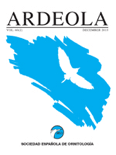
Ardeola-International Journal of Ornithology
Pioneering Research in Avian EcologyArdeola - International Journal of Ornithology, published by the SOCIEDAD ESPAÑOLA DE ORNITOLOGÍA, serves as a vital platform for the dissemination of research in the field of avian studies. With a history dating back to 1980, this esteemed journal has cultivated a reputation for high-quality research, achieving a notable Q2 category ranking in Animal Science and Zoology as well as in Ecology, Evolution, Behavior, and Systematics as of 2023. While primarily based in Spain, Ardeola caters to a global audience, providing essential insights into ornithology through rigorously peer-reviewed articles. The journal does not currently operate under an open-access model, which underscores the significance of institutional subscriptions and the importance of supporting academic publishing. Researchers, professionals, and students engaged in avian ecology will find Ardeola indispensable for accessing impactful studies that advance our understanding of bird populations, behaviors, and conservation issues. With its accessibility and continuing commitment to excellence, Ardeola plays a crucial role in fostering knowledge and promoting dialogue in the ornithological community.
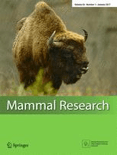
Mammal Research
Bridging Knowledge Gaps in Mammalian Ecology and BehaviorMammal Research, published by Springer Heidelberg, is a prominent academic journal dedicated to advancing knowledge in the fields of Animal Science, Zoology, Ecology, Evolution, and Behavior. With an impressive Q2 ranking in both Animal Science and Zoology and Ecology, Evolution, Behavior and Systematics as of 2023, this journal is an essential resource for researchers and professionals seeking to publish innovative findings that contribute to our understanding of mammalian biology. The journal operates under an Open Access model, allowing a wide audience to access and engage with high-quality research articles. Converging between 2015 to 2024, Mammal Research serves as a vital platform for scholarly discourse, promoting rigorous scientific inquiry and collaboration among experts and students alike in the fascinating study of mammals.
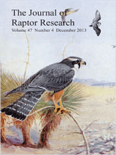
JOURNAL OF RAPTOR RESEARCH
Advancing the Science of Raptors and ConservationJOURNAL OF RAPTOR RESEARCH, published by Raptor Research Foundation Inc, serves as a pivotal platform for disseminating research related to the biology and conservation of raptors. Established in 1990, this esteemed journal has consistently contributed to the field of Animal Science and Zoology, securing a Q2 ranking in the 2023 category quartiles on Scopus, which highlights its significant impact and relevance. With an ISSN of 0892-1016 and an E-ISSN of 2162-4569, the journal presents an extensive range of studies aimed at promoting the understanding and preservation of these majestic birds of prey. Researchers, conservationists, and students alike will find invaluable insights and peer-reviewed articles that address current conservation challenges, ecological dynamics, and the latest methodological advancements in the study of raptors. Although not open access, the journal is integral for anyone dedicated to advancing the knowledge and appreciation of avian species in ecological and conservation contexts.
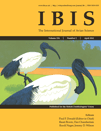
IBIS
Illuminating the path for ecological understanding.IBIS, published by WILEY, stands as a prestigious journal in the field of animal science, zoology, and ecology since its inception in 1859. With a focus on innovative research that informs the scientific community on ecological dynamics, behavioral studies, and conservation strategies, IBIS fills a critical niche for researchers, professionals, and students alike. The journal is recognized for its robust impact factor and commands a Q1 ranking in three key categories as of 2023, demonstrating its influence and reach within the global academic landscape, particularly in Animal Science, Ecology, Evolution, Behavior and Systematics, and Nature and Landscape Conservation. Although not an open-access publication, its rigorous peer-review process ensures high-quality contributions that advance knowledge in these vital areas. Through interdisciplinary collaboration and comprehensive coverage of cutting-edge topics, IBIS remains an essential resource for those striving to understand and protect our natural world.
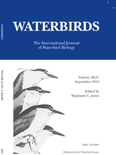
WATERBIRDS
Exploring the Depths of Avian ScienceWATERBIRDS, published by the WATERBIRD SOC, serves as a vital scholarly resource in the field of Animal Science and Zoology. With its ISSN 1524-4695 and E-ISSN 1938-5390, this journal has established a significant presence since its inception in 1996, continuing to contribute valuable insights and research up to 2024. Recognized for its impact within the academic community, WATERBIRDS is currently positioned in the third quartile (Q3) for its category in 2023, ranking 335 out of 490 in Scopus's Agricultural and Biological Sciences sector, which underscores its role in promoting the study of avian species and their habitats. The journal is accessible to a wider audience, aligning with the growing demand for open access to scientific knowledge. By disseminating research that addresses both ecological and conservation issues pertinent to waterbirds, this publication serves as an essential platform for researchers, professionals, and students dedicated to advancing the understanding of avian biology and related fields.
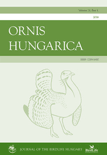
ORNIS HUNGARICA
Advancing avian knowledge for a sustainable future.ORNIS HUNGARICA, an esteemed journal in the fields of Animal Science and Zoology as well as Ecology, Evolution, Behavior and Systematics, is published by Walter de Gruyter GmbH, a leading scientific publisher renowned for its commitment to disseminating high-quality research. Operating under an Open Access model since 2012, this journal provides invaluable access to scholarly articles, fostering collaboration and knowledge sharing among researchers and professionals. With its ISSN 1215-1610 and E-ISSN 2061-9588, ORNIS HUNGARICA has become a noteworthy platform for innovative studies and findings from Hungary and beyond, contributing significantly to the discourse in its field. As indicated by its Q3 ranking in Animal Science and Zoology and Q4 ranking in Ecology, the journal is recognized for its diverse research contributions, although it aims to expand its reach and relevance in future editions. Researchers and students alike will find in ORNIS HUNGARICA a dedicated resource for advancing knowledge and furthering the understanding of avian biology and ecology.
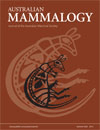
AUSTRALIAN MAMMALOGY
Championing Insights into Australia’s Diverse Mammal SpeciesAustralian Mammalogy, published by CSIRO PUBLISHING, is a pivotal journal in the fields of Animal Science and Zoology as well as Ecology, Evolution, Behavior and Systematics. With its ISSN 0310-0049 and E-ISSN 1836-7402, this esteemed journal has been instrumental in disseminating critical research findings since 2000, and continues to evolve up to 2024. Ranked in the Q2 quartile of both its categories for 2023, it showcases a diverse array of studies that contribute to understanding Australia’s unique mammalian fauna and its ecological dynamics. Researchers, professionals, and students will find valuable insights in its peer-reviewed articles, which are essential for advancing knowledge in these essential scientific disciplines. Located in Australia at UNIPARK, Locked Bag 10, Clayton, VIC, this journal remains committed to fostering scholarly communication within the global scientific community.

MARINE ORNITHOLOGY
Fostering Insights into the Lives of Ocean-Dwelling BirdsMarine Ornithology, published by the Pacific Seabird Group, is a vital resource in the field of animal science, zoology, and oceanography. With an ISSN of 1018-3337 and E-ISSN of 2074-1235, this journal has been a cornerstone for researchers and enthusiasts since its inception, actively contributing to the understanding of marine bird species and their ecosystems. Although it is currently not an open-access journal, it provides critical insights and findings that inform both academic research and practical conservation efforts. With its category quartiles positioned in Q3 for both Animal Science and Zoology, and Oceanography, Marine Ornithology occupies a significant, albeit competitive niche among scholarly publications. Researchers can benefit from its comprehensive coverage of marine avian studies, which is crucial for addressing the challenges these species face in changing oceanic environments. As the journal continues to evolve, with coverage from 1990 to 2024, it maintains an essential role in enriching our knowledge of marine biodiversity.
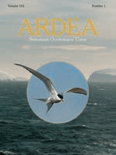
ARDEA
Exploring the world of ornithology, one study at a time.ARDEA, published by the Nederlandse Ornithologische Unie, is a prominent journal in the fields of Animal Science, Zoology, and Ecology. With its rich history spanning from 1981 to the present, ARDEA serves as a vital platform for researchers and professionals dedicated to avian studies and the ecological sciences. This quarterly journal is recognized in the Q3 category for both Animal Science and Ecology, as per the latest rankings, and maintains an impressive global standing within its subject areas. Although it operates without an open access model, the journal provides significant insights and contributions to the understanding of bird biology, conservation, and evolution. Researchers and students seeking to advance their knowledge in ornithology and related fields will find ARDEA to be an indispensable resource, promoting high-quality research and fostering academic collaboration.
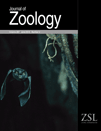
JOURNAL OF ZOOLOGY
Championing research that shapes the future of zoology.JOURNAL OF ZOOLOGY, published by Wiley, stands as a premier scholarly journal in the fields of Animal Science and Zoology, renowned for its outstanding contributions to the knowledge of animal biology and ecology. With an impressive impact factor and a strong ranking in the Q1 category for Animal Science and Zoology, as well as Q2 for Ecology, Evolution, Behavior, and Systematics, the journal rigorously engages with both foundational research and groundbreaking discoveries since its inception in 1830. Located in Hoboken, New Jersey, this journal is dedicated to fostering the academic community's understanding of zoological sciences, providing access to important research that shapes wildlife conservation efforts and ecological studies. Although the journal does not currently offer open access options, it continues to attract significant attention, as evidenced by its strong Scopus rankings in related categories. Researchers, professionals, and students will find invaluable resources in the JOURNAL OF ZOOLOGY to advance their understanding of animal life and the ecological challenges it faces today.